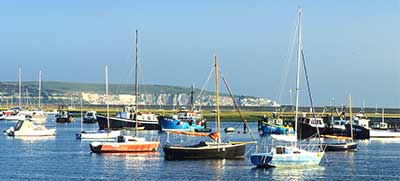Birds of Keyhaven, Pennington Marsh, Normandy Marsh and Hurst
When considering the birds of this south-west coastal corner of Hampshire - part of the New Forest National Park - it really is difficult to know where to start, for this is one of southern England's, if not the UK's, premier birdlife sites for whatever the weather, the time of year and state of the tides, there is always likely to be much of interest to see, and often at quite close range, too.
(1) Location is everything
The relatively mild climate encourages winter visitors to stay and, in any case, salt water, saline water and salty mud are notoriously resistant to freezing which, of course, helps ensure ready access to foodstuffs for a wide range of species.
Other aspects of location also help, with many incoming spring migrants finding their first landfall here and staying, at least for a while, before going on to breeding grounds farther north.
Outgoing autumn migrants, without the need to hurry on to breed, take more leisurely breaks to rest and feed before braving the Channel crossing on their way to wintering grounds farther south.
(2) Home sweet home
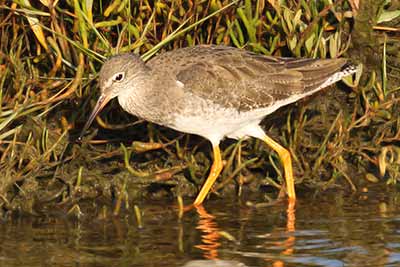
Other major factors that encourage the presence of a great many species and equally impressive numbers of birds are remarkable habitat diversity; effective management of local nature reserves; the protection afforded by a number of conservation designations and relatively little (although sadly increasing) disturbance by humans.
And the habitats present? Well, there are the open waters of the Solent and nearby Christchurch Bay; extensive mudflats, salt-marshes, shingle islands and the shingle of Hurst Spit; ponds, ditches and shallow, saline lagoons; the remains of centuries-old salterns; grazing marshes; reed-beds; farmland; ancient green lanes; well-grown hedgerows, nearby woodlands and assorted patches of trees, scrub and shrubs.
(3) Remarkable numbers of birds
Virtually all of southern England's common resident species - most just too numerous to mention - occur here, along with many other more notable species, including many others that are present for just a part of the year.
Indeed, species day counts in spring, for example, can exceed 100, whilst just over 300 species in total have been recorded.
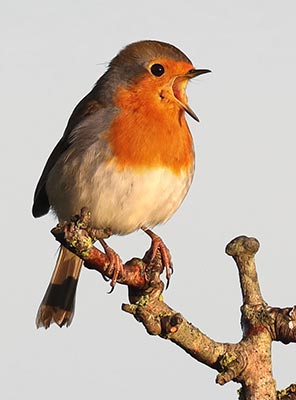
(4) Birds of prey

Birds of prey can be seen all-the-year-round. Kestrels frequently hunt over the marshes and rough grasslands' buzzards soar over the woodlands a little to the north, but are often clearly visible from the coast' and peregrines are increasingly observed in powerful flight, spoilt for choice in their search for prey.
Sparrowhawks, too, are present throughout the year' merlins are autumn and winter visitors' hobbies occur primarily in spring and summer' ospreys pass through in spring, late-summer and autumn' and marsh harriers in recent years have increasingly been seen in a variety of months.
Barn owls and tawny owls are year-round residents, little owls are occasionally seen, albeit infrequently, whilst short-eared owls are sometimes present from late summer through autumn and winter, and into early spring.

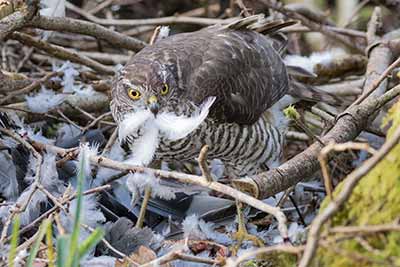

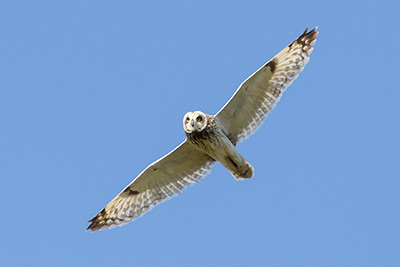
(5) Wading birds
Waders can be seen in varying numbers all the year round. Often providing identification challenges for all but the keenest observers, these birds often use lengthy bills to probe the mud in the lagoons and on the mudflats in search of invertebrate prey.
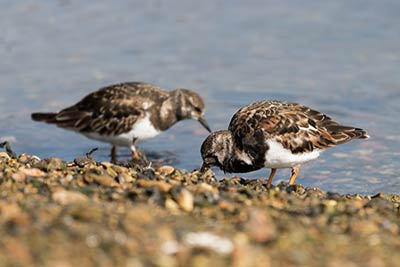
Turnstones, though, as their name suggests, are notable exceptions - they turn over stones, clumps of seaweed and other detritus on the foreshore and amongst shingle in search of prey. They are often present around Cut Bridge, along the inshore side of Hurst Spit and around the jetty near the Butts Lagoon.
Birds that can be seen all the year round, albeit usually in relatively small numbers in spring and summer, include redshank, greenshank, grey plover, snipe, curlew, oystercatcher, turnstone, black-tailed and bar-tailed godwits, lapwing, knot, dunlin, ruff and ringed plovers. Oystercatchers, redshanks, ringed plovers and lapwings are regular breeders.
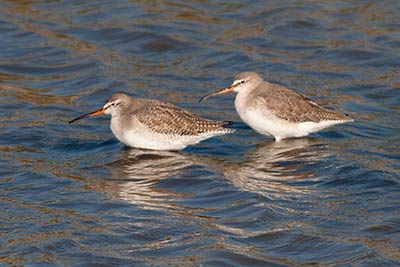
In late summer, autumn and winter, resident birds are joined by visitors from afar that settle to spend the colder months here, and new species arrive for the same purpose, species such as golden plover and occasional jack snipe and spotted redshanks.
At passage times in spring, but more often in late-summer and autumn, common sandpipers, green sandpipers, wood sandpipers, curlew sandpipers, little stints and sanderlings might also be present, these birds often favouring stop-overs on the shallow lagoons and mudflats. Whimbrels, primarily passage migrants, too, in contrast, often favour the shallow sections of open water beyond the seawall.
Little ringed plovers visit in spring and summer, and sometimes attempt to breed, whilst avocets were mostly associated with winter and passage periods, although breeding has occurred in recent years.
(6) Wildfowl and other water birds
Wildfowl and other water birds are usually present in good numbers with the highest counts typically occurring in winter.

Look out all the year round for mallards, coots, moorhens, mute swans, water rails, Canada geese, shelduck and little grebes, all of which are regular breeders; whilst also often present, but not usually breeding, are little egrets, grey herons, gadwall, teal, cormorants and eider ducks, the latter usually to be seen a distance off-shore.
Wigeon are regular autumn and winter visitors, often in huge numbers, but few are present in spring and summer - they like to feed and rest on the lagoons, adjacent grassy banks and nearby damp fields.
Shovelers in smaller numbers are also consistently present in autumn and winter, and occasionally at other times, whilst tufted ducks and pintails occur almost exclusively in autumn and winter.
Goldeneyes and occasional hard-weather-driven smews may also be present in winter, whilst off-shore, great crested grebes are present all-the-year-round, and slavonian grebes and red-breasted mergansers in autumn and winter.
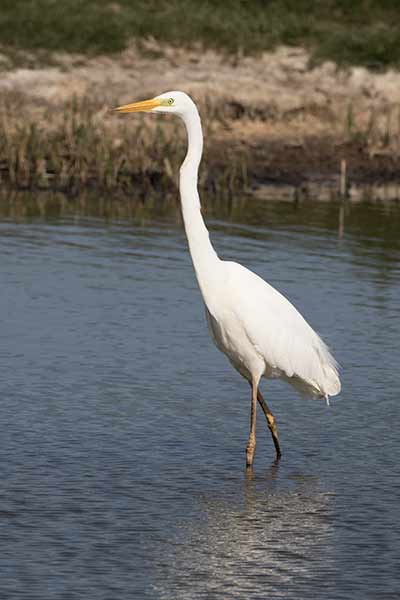
Spoonbills and great white egrets sometimes make extended stays on the lagoons; garganey, arctic terns and black terns pass through in spring and autumn; and sandwich terns, little terns and common terns stop to breed, entrancing watchers with their graceful flight and powerful hunting dives into the lagoons and the open waters beyond the seawall.
Barnacle geese may occasionally turn up, but dark-bellied brent geese, often in enormous flocks, can frequently be seen in autumn, winter and early spring, although very small numbers may occasionally be present at other times.
Sea-watching from Hurst Spit can be productive. Gannets are usually recorded in all months of the year; common scoters, and occasional velvet scoters are most often seen in winter and spring; small numbers of pomarine skuas, arctic skuas and great skuas are mainly seen in spring and autumn; whilst Manx shearwaters in small numbers are sometimes seen in spring and summer.
Mediterranean gulls, black-headed gulls, herring gulls, greater black-backed gulls and lesser black-backed gulls are present in all months of the year; little gulls are seen mainly in spring and autumn, whilst common gulls - despite their name - are far from common.
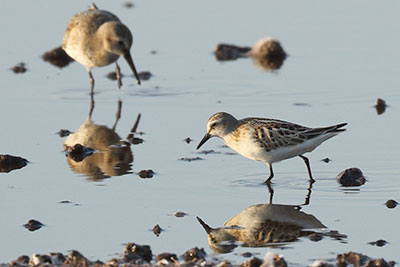
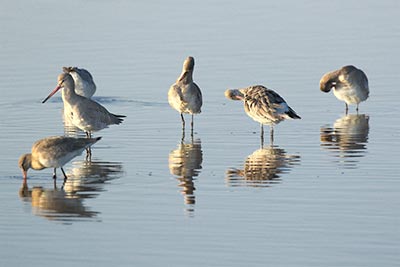
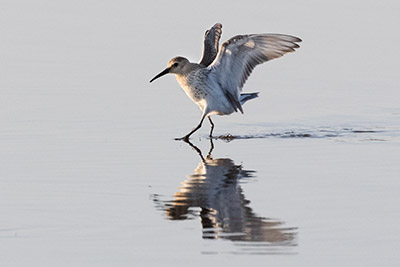
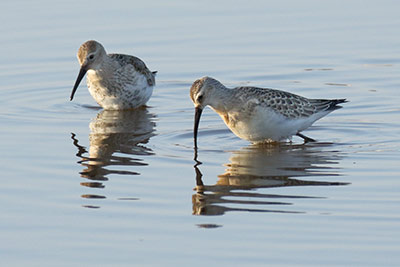
(7) Some other notable species

Kingfishers often abandon their inland breeding grounds and grace the coast from late-summer to early spring, and can be seen in low, dashing flight over the lagoons and water channels, or else perched waiting for unwary fish to pass below.
Bearded tits favour the Avon Water reed-beds and so, too, do Cetti's warblers, although the latter can also be heard and infrequently seen elsewhere. Both are present throughout the year as are reed buntings, whereas reed warblers and sedge warblers only visit to breed.
Particularly when population levels are high in the New Forest, Dartford warblers, especially young of the year, turn up on the coast where some settle and eventually breed - the gorse near Iley Point seems to be a favourite location for them. Some stonechats, too, from late-summer onwards relocate from the breeding grounds and settle on the coast, whilst linnets are typically present throughout the year.
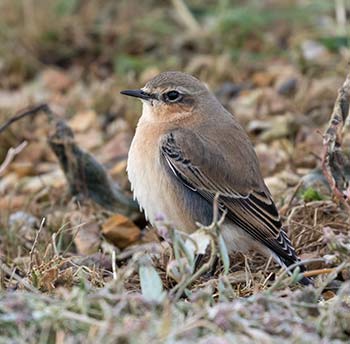
Yellow wagtails, wheatears and whinchats are notable passage species in spring, late-summer and early autumn; sand martins, house martins and swallows at passage times stop to feed over the lagoons; swifts pass through; ravens are seen throughout the year, sometimes journeying to and from the Isle of Wight; and rock pipits are present throughout the year and regularly breed, primarily on Hurst Spit and around the Castle.
And finally, look out for the humble starling. Large flocks of these birds, including many young of the year, appear from mid-summer, feeding on the grasslands and wet meadows, and just before dusk in autumn and winter can sometimes be seen in huge numbers, swirling about the sky, a murmuration of birds providing an amazing spectacle before diving down to roost in reed-beds or dense scrub.
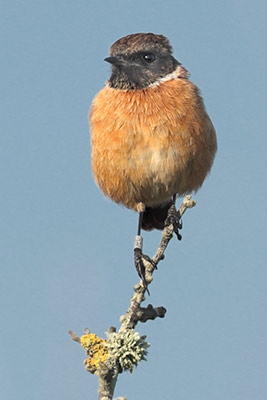
Parking
'Pay and Display' parking is available in the centre of Keyhaven, opposite The Gun Inn. A limited amount of short stay - up to 4 hours - free parking is available beside the seawall on the road leading past the Avon Water outflow, but space here is at a premium. Further limited parking is available at the end of Lower Pennington Lane. Roadside parking is available close to Hurst Spit, beside New Lane and Saltgrass Lane; and parking is also available at the Lymington end of the seawall path.
References:
Hampshire Ornithological Society Bird Reports
Secret Marsh: Aimée Durnell
One man's marshes - the birds of Lymington and Keyhaven: Ed Wiseman
Lymington-Keyhaven Report 2010
Quick links
More links
Search this site

